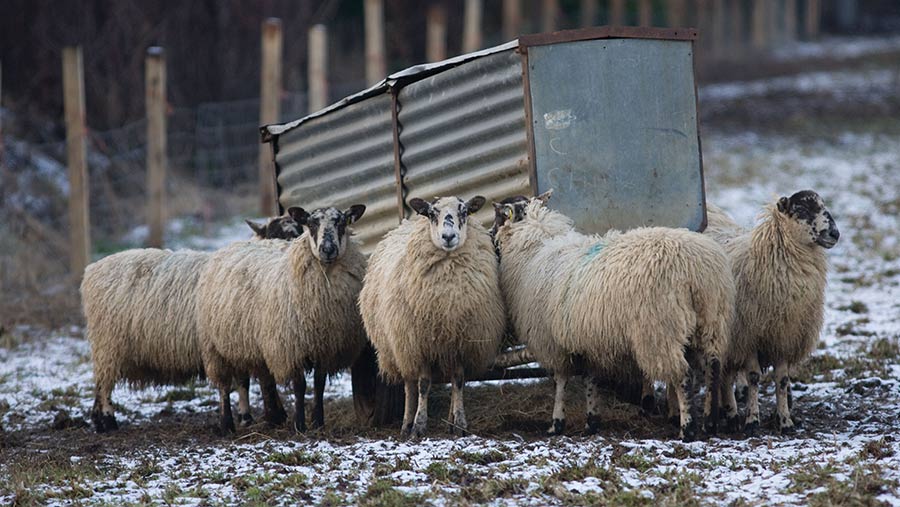4 wet weather tips ahead of lambing
 © Tim Scrivener
© Tim Scrivener Waterlogged farms should consider all alternative options before grazing spring grass reserved for lambing, remind grassland advisers.
Many shepherds faced with saturated ground conditions have housed early following torrential rain and melt water from deep snows.
But those continuing to outwinter sheep are advised to spare enough spring grass for lambing.
This is according to independent sheep and beef adviser Liz Genever and SAC sheep and grassland specialist Poppy Frater, who say many systems have already adapted plans this winter.
See also: 6 ways to future-proof your sheep business
They give four key principles to guide flock managers through to the spring.
1 Prioritise lambing paddocks
- If you’re lambing in April and trying to maximise grass use and cuts costs, it’s far more cost-effective to supplement ewes now when their energy requirement is low than to supplement in late gestation or at lambing
- Come the spring, well-managed grassland is often 11.5 metabolisable energy and 17% crude protein, which is far more cost-effective than a bought-in feed
- Localise damage by using sacrifice fields. Target less-productive fields that can be reseeded
- Limit damage by shortening time spent on paddocks to 24 or even 12 hours to avoid poaching. This means higher stocking rates for less time
- Grazing root crops is challenging this winter so if animals can’t be given a run back to dry ground, then straw may be needed
- Adding buckets and blocks will not address low dry matter (DM) issues
Targets
- Lambing paddocks should have been grazed out tight to 3.5-4cm and rested for at least three months (100-120 days)
- As a rule, well-managed grass should be at a minimum of 4.5-5cm to supply all the nutrition the ewe needs to feed its lamb. Grass at 3-4cm (1,200-1,500kg DM/ha) requires concentrate feeding and grass below 3cm requires forage and cake (1,200kg DM/ha)
Demands of a milky 70kg lowland ewe with twins |
|||
|
Demand period |
Seven weeks pre-lambing |
One-week pre-lambing |
Producing 2-3kg of milk/day |
|
Metabolisable energy requirement |
11.4MJ/day |
18.3MJ/day |
23.3-31.55MJ/day |
| Source: Feeding the ewe, AHDB | |||
2 Check body condition score
- Many flocks have housed early or housed the leaner ewes
- If you are planning a round of dosing or vaccination before lambing, use this as a chance to check ewe condition and assess if supplementary feeding is needed or should be increased
Targets
- The target body condition score (BCS) at lambing for a 60-80kg lowland ewe is 3-3.5
- A 40-60kg hill ewe is 2.5
- Ewe lambs should lamb in condition score 3
3 Use scan results
- When cross-referenced with BCS, scan results can help decide what housing arrangements are needed
- If overstocking inside is a worry, consider leaving fit sheep outside and housing priority animals i.e. thin multiple-bearing ewes, triplets and first lambers
- Walk the shed and feeding areas to measure them and calculate trough space and stocking density
- Empty ewes could be sold to minimise workload
Targets
- Smaller sheep require 45cm a head of feeding space for concentrates. Larger sheep need 50cm a head. Ad-lib forage requires 10-15cm a head
-
When calculating stocking rates inside, lowland ewes (60-90kg) need 1.2-1.4sq m a head, hill ewes (45-65kg) require 1-1.2sq m a head and rams need 1.5-2sq m a head
4 Plan ahead
- Give rumens at least three weeks to adjust before lambing if turning sheep out to pasture after housing
- Transition them with indoor forage
- Some fodder beet growers can’t lift crops from fields. Soils are wet and cold, meaning a late spring could be on the cards. Check feed and forage supplies if turnout is delayed
